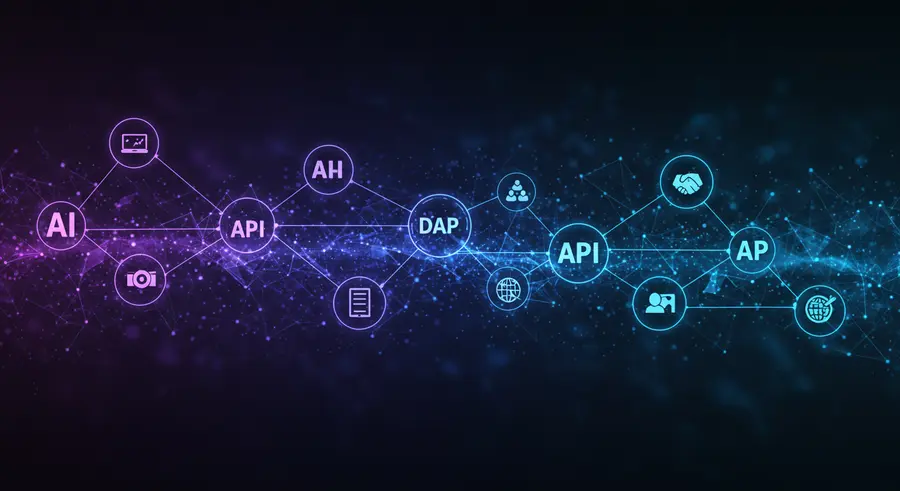Appearance

Welcome, fellow developers! 👋 Today, we're taking a deep dive into the more intricate and powerful aspects of GraphQL. While basic queries and mutations are foundational, truly mastering GraphQL involves understanding and leveraging its advanced features like Fragments, Directives, and sophisticated Pagination techniques. These concepts not only streamline your API interactions but also lead to more efficient and maintainable applications.
If you're new to GraphQL, I highly recommend checking out our introductory article: Deep Dive into GraphQL.
Let's unlock the full potential of your GraphQL APIs! 🚀
🧩 GraphQL Fragments: Reusability and Organization
Imagine you have several different queries that all need to fetch the same set of fields for a particular type. Copy-pasting these fields across multiple queries can lead to redundancy, making your code harder to read and maintain. This is where Fragments come to the rescue!
A fragment is a reusable unit of fields. You define a set of fields once, give it a name, and then include that fragment wherever you need those fields.
Why use Fragments?
- Reusability: Define common field sets once and reuse them across multiple queries and mutations.
- Maintainability: Changes to a common set of fields only need to be made in one place (the fragment definition).
- Readability: Keeps your queries cleaner and easier to understand by abstracting away repetitive field selections.
- Collocation: When working with component-based UI frameworks (like React with Apollo Client), fragments allow you to collocate data requirements with the components that use them.
How to define and use Fragments:
graphql
# Define a fragment for user details
fragment UserDetails on User {
id
name
email
createdAt
}
# Use the fragment in a query
query GetUserProfile($userId: ID!) {
user(id: $userId) {
...UserDetails
# You can add more fields specific to this query if needed
bio
}
}
# Use the same fragment in another query
query GetAllAuthors {
authors {
...UserDetails
# Or even include other fragments or fields
articlesPublished
}
}In this example, UserDetails is a fragment defined on the User type. We then reuse this fragment in two different queries. Notice the ...UserDetails syntax – this is how you spread the fields from a fragment into your query.
⚙️ GraphQL Directives: Dynamic Behavior for Your Queries
Directives are powerful markers that can be attached to fields or fragments in your GraphQL query or schema. They provide a way to add dynamic behavior or modify the execution of a query at runtime. The GraphQL specification includes two built-in directives: @include and @skip.
@include(if: Boolean)
Includes the field or fragment only if the if argument is true.
@skip(if: Boolean)
Skips the field or fragment if the if argument is true.
Practical Example with @include and @skip:
graphql
query ProductDetails($productId: ID!, $includeReviews: Boolean!, $skipPriceHistory: Boolean!) {
product(id: $productId) {
name
description
price @skip(if: $skipPriceHistory) {
current
history
}
reviews @include(if: $includeReviews) {
id
rating
comment
}
}
}In this query, the price field will be skipped if $skipPriceHistory is true, and the reviews field will only be included if $includeReviews is true. This allows clients to dynamically control the data they receive without altering the query structure itself.
Custom Directives (Advanced):
Beyond the built-in directives, you can define custom directives in your GraphQL schema. These are particularly useful for:
- Authorization:
@auth(role: "ADMIN") - Formatting:
@format(type: "currency") - Caching:
@cached(ttl: 60)
Custom directives require server-side implementation to define their logic and how they influence query execution. They provide immense flexibility for extending GraphQL's capabilities.
➡️ Advanced Pagination: Efficient Data Loading
Pagination is crucial for handling large lists of data. While simple offset-based (limit/offset) pagination is easy to implement, it can become inefficient and prone to issues (like skipping items if new ones are added) as data changes. GraphQL shines with more robust pagination strategies, especially Cursor-based Pagination.
Cursor-based Pagination (Relay-style Pagination):
This method uses an opaque "cursor" to mark a specific point in the list. The client then requests items "after" or "before" a given cursor. This approach is more resilient to data changes and is highly efficient for infinite scrolling.
The common pattern for cursor-based pagination involves:
edges: An array of objects, where each object contains anode(the actual item) and acursor(the opaque string representing the item's position).pageInfo: An object containing information about the current page, such ashasPreviousPage,hasNextPage,startCursor, andendCursor.
Example of Cursor-based Pagination:
graphql
query GetPosts($first: Int, $after: String) {
posts(first: $first, after: $after) {
edges {
node {
id
title
author {
name
}
}
cursor
}
pageInfo {
endCursor
hasNextPage
}
}
}To fetch the next page, you would pass the endCursor from the previous response as the after argument in your subsequent query.
Why Cursor-based Pagination?
- Reliability: Not affected by new items being added or removed from the list during pagination.
- Efficiency: Allows for efficient fetching of data in large datasets, especially for complex joins or filters.
- Flexibility: Supports fetching both forwards (
first,after) and backwards (last,before).
💡 Schema Design Considerations for Advanced Concepts
Effective use of fragments, directives, and advanced pagination heavily relies on a well-designed GraphQL schema.
- Type Granularity: Design your types with appropriate granularity to allow clients to fetch exactly what they need.
- Connections for Lists: For lists that require pagination, model them as "Connections" (e.g.,
UserConnection,PostConnection) that exposeedgesandpageInfo. - Descriptive Naming: Use clear and consistent naming for your fields, arguments, and types.
- Deprecation: Use the
@deprecateddirective to gracefully evolve your schema over time without breaking existing clients.
Conclusion
Fragments, directives, and advanced pagination are not just "nice-to-have" features; they are essential tools for building scalable, maintainable, and highly efficient GraphQL APIs. By embracing these concepts, you empower your clients to fetch data precisely as needed, reduce over-fetching, and create a more robust and pleasant developer experience.
Keep experimenting, keep learning, and keep building amazing things with GraphQL! 🚀
#GraphQL #API #WebDevelopment #Fragments #Directives #Pagination #AdvancedGraphQL